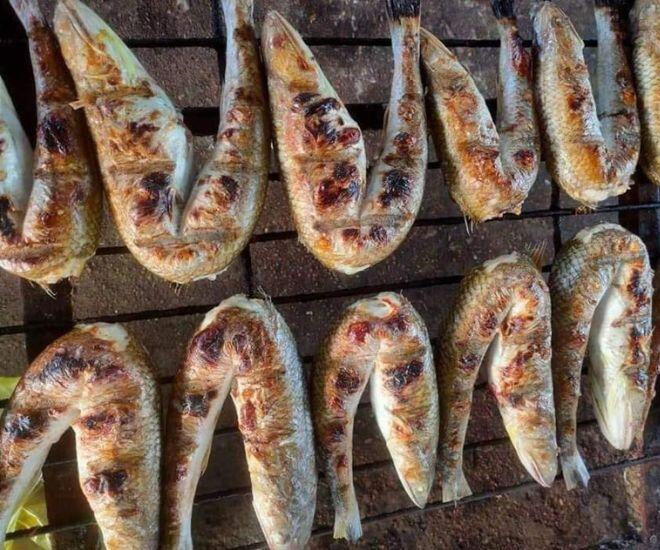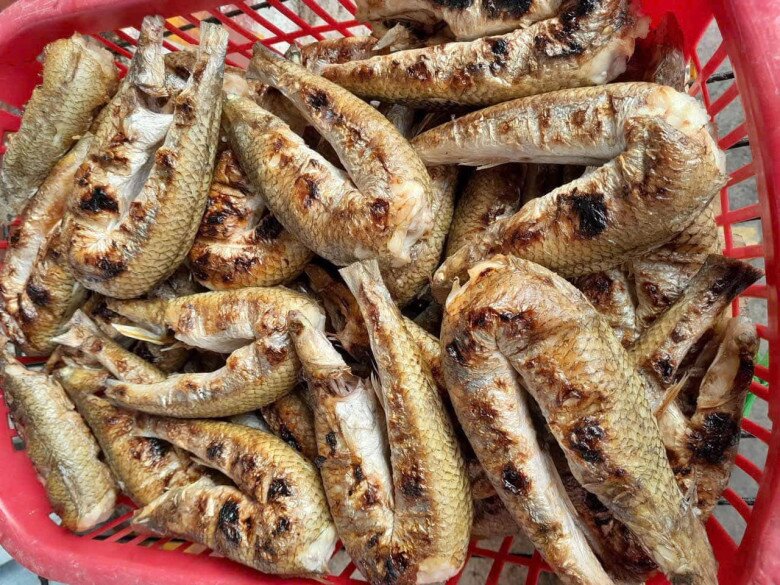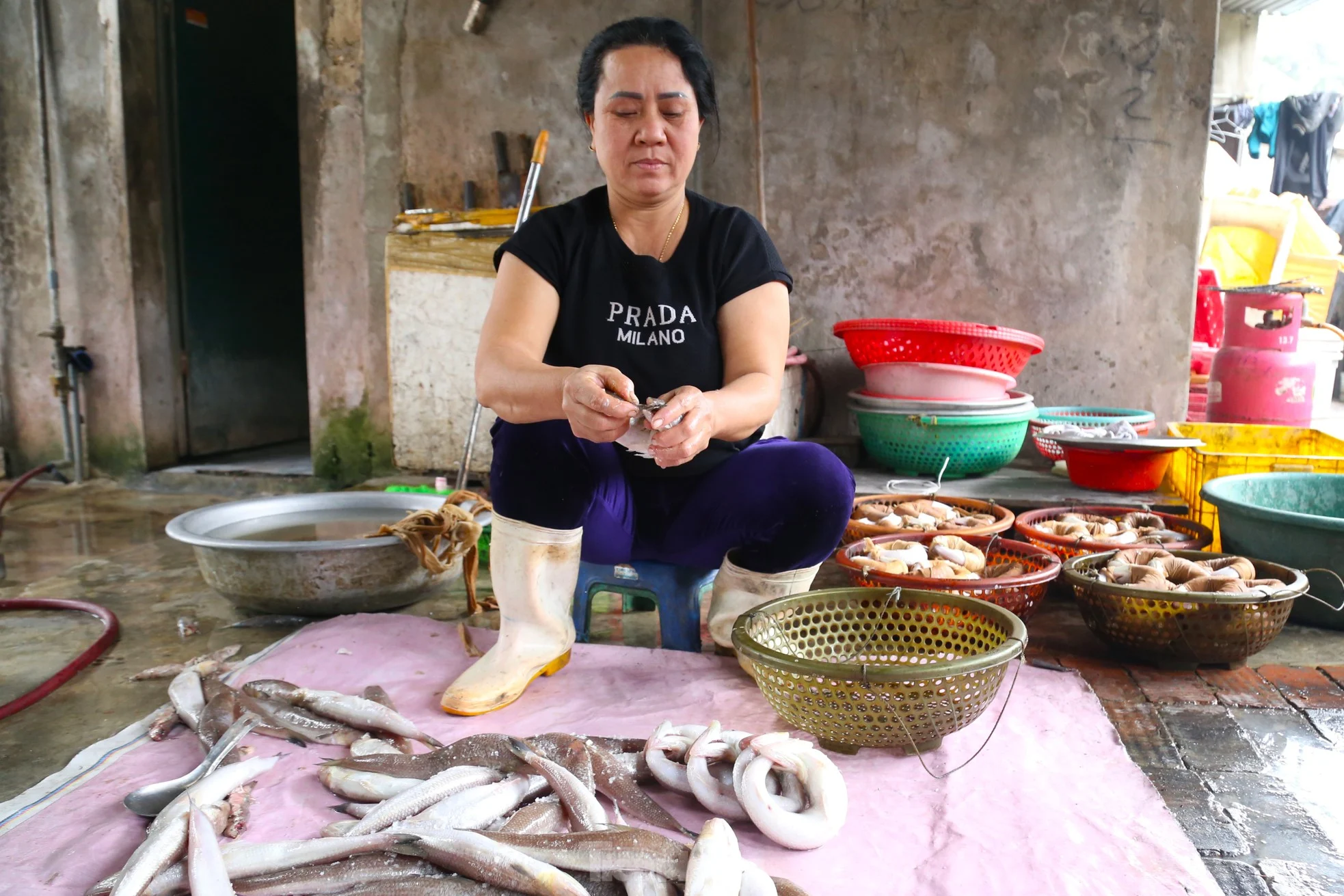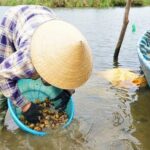
Exploring the Cultural Significance of “Thung” Fish in Nghi Thuy, Nghe An
For generations, the lives of the people of Nghi Thuy have been intertwined with the sea. Fish and shrimp are not just a means of livelihood but also an integral part of their cultural consciousness. Among the various seafood delights, “thung” fish holds a very special place in their hearts.
The “thung” fishing season begins in October and lasts until the end of December in the lunar calendar. During these winter months, when the fishing boats return to the shore, the fresh catch is immediately snapped up by local traders. This signifies the arrival of the Tet holiday season, a time for family reunions and heartfelt celebrations.

Transforming “thung” fish into a traditional delicacy is a meticulous and laborious process. Once purchased, the fish are carefully selected, with a preference for larger, evenly sized ones. Cleaning the fish requires skill and gentleness to ensure they are thoroughly washed without damaging their delicate scales, thus preserving their natural beauty. Subsequently, each fish is shaped into a complete circle, with its mouth gently tucked under its tail, symbolizing completeness and abundance. This unique shape not only carries profound cultural significance but also makes the dish more aesthetically pleasing when presented on festive platters.
To maintain the circular form, the fish are secured with bamboo skewers or fishing lines, ensuring symmetry without breaking any bones. They are then gently steamed until partially cooked and placed on wire racks to drain excess moisture before the smoking process begins.

The art of smoking “thung” fish lies in the use of charcoal and the meticulous control of temperature. The fish are carefully turned over the smoldering coals to ensure even cooking without charring their delicate scales. Once they feel dry to the touch, the fish are transferred to another round wire rack.
Below this rack, a layer of fresh sugarcane bagasse or husks is placed over the charcoal. The heat from the coals gently burns the bagasse, releasing a sweet, fragrant smoke imbued with the subtle essence of sugarcane. The rack of fish is then placed inside an upturned drum positioned over the smoky fire, infusing the fish with a distinctive aroma and a golden hue.
After this intricate preparation, “thung” fish becomes a versatile ingredient, lending itself to a variety of mouthwatering dishes. The most notable and beloved creation is “thung” fish simmered in sugarcane syrup. This dish not only symbolizes “heaven” but also captivates diners with its distinctive, unforgettable flavor. The firm, naturally sweet flesh of the “thung” fish, coupled with its minimal bones, makes it an ideal addition to the Tet feast, which is often abundant in meat and processed foods. The rounded shape of the fish also adds a touch of elegance and balance to the festive spread.
Furthermore, the pre-prepared “thung” fish can be stored for extended periods, even up to several months in the refrigerator. As it ages, the fish absorbs more of the flavors, becoming even more delectable over time, making it a popular choice for festive gifts.

Preparing “thung” fish simmered in sugarcane syrup is a relatively simple process. The fish are neatly arranged in an earthenware pot, with a layer of split sugarcane and sliced ginger at the bottom. Traditional spices such as scallions, garlic, chili peppers, fish sauce, and the distinctive sugarcane syrup of Nghe An are added to the pot. This concoction is then simmered over a gentle flame for several hours until it reaches a gentle boil. Using the traditional wood-fired cooking method, once the fish has been boiling for about an hour, the fire is extinguished, and rice husks are added to slowly smoke the fish, softening the bones while keeping the flesh firm.
“Attract Wealth and Prosperity: The Ultimate Guide to Choosing the Perfect Feng Shui Plum Tree for Your Home”
The Feng Shui Carambola tree is a beautiful and auspicious addition to any home or garden. With its vibrant, lush foliage and unique fruit, this tree is believed to bring good fortune and prosperity to its owners. Not only is it aesthetically pleasing, but the Carambola tree also has a rich history in traditional medicine, with its leaves and fruit believed to possess healing properties.
The Market: A Source of Pride for the People of Ca Mau, Attracting 700 Visitors Daily, with Foreigners Falling in Love with Its Charms
Nestled on the Ganh Hao River’s lower reaches, Ca Mau floating market is a vibrant hub of agricultural trade and a unique cultural phenomenon in the Mekong Delta region of Southern Vietnam. Spontaneously emerging from the trading activities of boat-dwelling merchants, the market bustles with life from 2 AM to 6 AM daily, drawing hundreds of traders and increasingly attracting eco-tourists to this southernmost tip of the country.




































